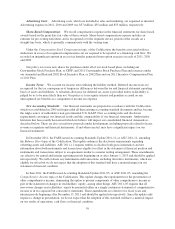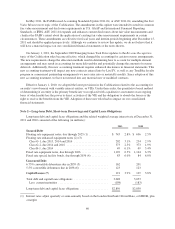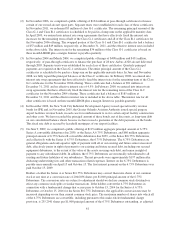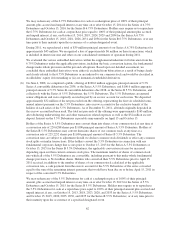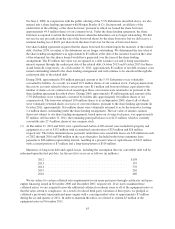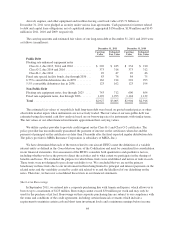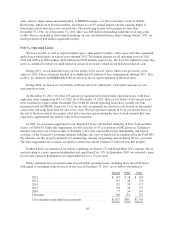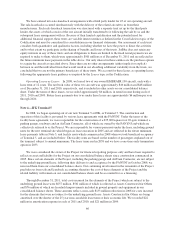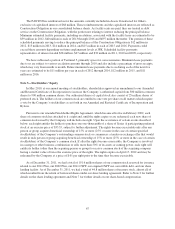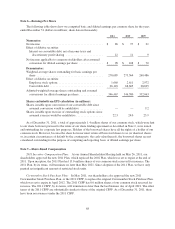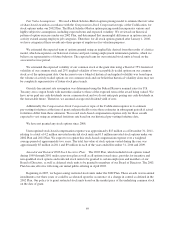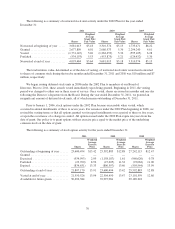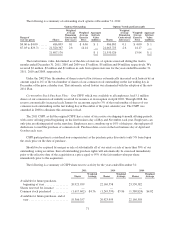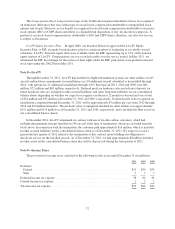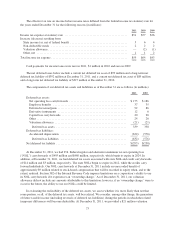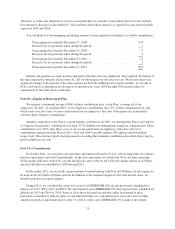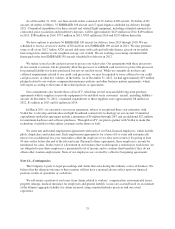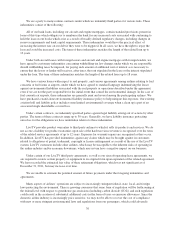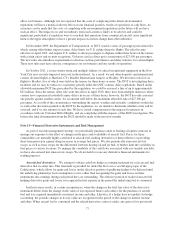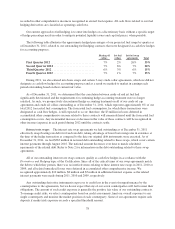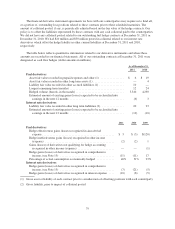JetBlue Airlines 2011 Annual Report Download - page 79
Download and view the complete annual report
Please find page 79 of the 2011 JetBlue Airlines annual report below. You can navigate through the pages in the report by either clicking on the pages listed below, or by using the keyword search tool below to find specific information within the annual report.Fair Value Assumptions: We used a Black-Scholes-Merton option pricing model to estimate the fair value
of share-based awards in accordance with the Compensation-Stock Compensation topic of the Codification, for
stock options under our 2002 Plan. The Black-Scholes-Merton option pricing model incorporates various and
highly subjective assumptions, including expected term and expected volatility. We reviewed our historical
pattern of option exercises under our 2002 Plan, and determined that meaningful differences in option exercise
activity existed among employee job categories. Therefore, for all stock options granted after January 1, 2006,
we have categorized these awards into three groups of employees for valuation purposes.
We estimated the expected term of options granted using an implied life derived from the results of a lattice
model, which incorporates our historical exercise and post-vesting employment termination patterns, which we
believe are representative of future behavior. The expected term for our restricted stock units is based on the
associated service period.
We estimated the expected volatility of our common stock at the grant date using a blend of 75% historical
volatility of our common stock and 25% implied volatility of two-year publicly traded options on our common
stock as of the option grant date. Our decision to use a blend of historical and implied volatility was based upon
the volume of actively traded options on our common stock and our belief that historical volatility alone may not
be completely representative of future stock price trends.
Our risk-free interest rate assumption was determined using the Federal Reserve nominal rates for U.S.
Treasury zero-coupon bonds with maturities similar to those of the expected term of the award being valued. We
have never paid any cash dividends on our common stock and we do not anticipate paying any cash dividends in
the foreseeable future. Therefore, we assumed an expected dividend yield of zero.
Additionally, the Compensation-Stock Compensation topic of the Codification requires us to estimate
pre-vesting forfeitures at the time of grant and periodically revise those estimates in subsequent periods if actual
forfeitures differ from those estimates. We record stock-based compensation expense only for those awards
expected to vest using an estimated forfeiture rate based on our historical pre-vesting forfeiture data.
We have not granted any stock options since 2008.
Unrecognized stock-based compensation expense was approximately $15 million as of December 31, 2011,
relating to a total of 4.2 million unvested restricted stock units and 0.3 million unvested stock options under our
2002 Plan and 2011 Plan. We expect to recognize this stock-based compensation expense over a weighted
average period of approximately two years. The total fair value of stock options vested during the year was
approximately $5 million in 2011 and $9 million in each of the years ended December 31, 2010 and 2009.
Amended and Restated 2002 Stock Incentive Plan: The 2002 Plan, which included stock options issued
during 1999 through 2001 under a previous plan as well as all options issued since, provides for incentive and
non-qualified stock options and restricted stock units to be granted to certain employees and members of our
Board of Directors, as well as deferred stock units to be granted to members of our Board of Directors. The 2002
Plan became effective following our initial public offering in April 2002.
Beginning in 2007, we began issuing restricted stock units under the 2002 Plan. These awards vest in annual
installments over three years or could be accelerated upon the occurrence of a change in control as defined in the
2002 Plan. Our policy is to grant restricted stock units based on the market price of the underlying common stock
on the date of grant.
69


